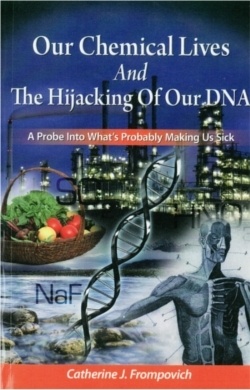Catherine J. Frompovich
vactruth.com
06/18/2010
How many times have you gone to the dentist and had dental caries (cavities) repaired with silver (amalgam) fillings? Most folks in the USA experience that procedure and consider it safe. But is it really? That’s why after all these years the U.S. Food and Drug Administration (FDA) has scheduled an advisory panel meeting to be held December 14 and 15, 2010 to discuss the issue: Safety of dental amalgams or silver fillings. http://www.fda.gov/NewsEvents/Newsroom/PressAnnouncements/ucm215061.htm
Finally, after all these years FDA is getting around to discussing whether amalgam fillings are safe for pregnant women, their fetuses, and children. I’m skeptical that the American Dental Association (founded 1859) will allow FDA to restrict the use of silver fillings. Why? Well, how does a profession wipe a two-hundred-year-old egg off its collective face?
Silver fillings (amalgams) were first introduced in the early 1800s in France. However, in the late 1970s several European countries started having second thoughts about amalgam fillings and recommended them as unsafe for pregnant women. Over the years more scientific information confirmed the need to eliminate them, which Norway, Sweden, and Denmark have done. By law dentists in those countries no longer can provide silver fillings. Furthermore, dental insurance plans no longer reimburse or pay for amalgam fillings in those countries. Austria and Germany have restrictions on amalgam fillings for pregnant women, children, kidney disease patients, persons with mercury sensitivity, and when mercury will come in contact with other metals in the mouth, e.g., braces and bridgework, since piezoelectric currents in the mouth can be created when mercury and other metals coexist.
The U.S. Occupational Safety and Health Administration (OSHA) and National Institute for Occupational Safety and Health (NIOSH) define mercury as an environmental toxin. So does the World Health Organization (WHO). Are you aware that crematoriums in the U.S. are required to capture mercury gases from cadavers with amalgam fillings upon cremation because of the toxicity? So how can such fillings be placed into humans’ mouths when they are alive and not be considered toxic? That doesn’t make much sense, does it? Toxic at any time is toxic all the time!
According to EPA’s web site http://www.epa.gov/hg/about.htm
Health effects of mercury. Mercury exposure at high levels can harm the brain, heart, kidneys, lungs, and immune system of people of all ages. … However, it has been demonstrated that high levels of methylmercury in the bloodstream of unborn babies and young children may harm the developing nervous system, making the child less able to think and learn.
Methylmercury [CH3Hg] is the most toxic form. Now can you understand why so many European countries have banned mercury in amalgam fillings? And here in the USA, the dental profession and FDA are acting like some Johnny-come-latelies.
Another form of mercury, ethylmercury [C2H5Hg+], commonly is used in medical formulations like Thimerosal in vaccines, which the pharmaceutical industry claims is a less toxic form of mercury and not bioaccumulative. Toxic is toxic! A normal flu shot usually contains 25 micrograms of ethylmercury as Thimerosal, a neurotoxin.
In August 2005 Environmental Health Perspectives, a peer-reviewed open access journal published by the National Institute of Environmental Health Sciences, published a study, Comparison of Blood and Brain Mercury Levels in Infant Monkeys Exposed to Methylmercury or Vaccines Containing Thimerosal, by researchers at University of Washington, Seattle, Washington, and University of Rochester School of Medicine, Rochester, New York, which reported the following:
…the average brain-to-blood concentration ratio was slightly higher for the thimerosal-exposed monkeys. … A higher percentage of the total Hg in the brain was in the form of inorganic Hg for the thimerosal-exposed monkeys (34% vs. 7%).
The researchers concluded:
Knowledge of the toxicokinetics and developmental toxicity of thimerosal is needed to afford a meaningful assessment of the developmental effects of thimerosal-containing vaccines. http://ehp03.niehs.nih.gov/article/fetchArticle.action?articleURI=info:doi/10.1289/ehp.7712
Getting back to mercury in amalgam fillings, mercury comprises 50 percent of a eutectic mixture with the balance consisting of copper, tin, silver, and zinc in a powder or shavings. A practicing dentist, who switched from amalgam fillings to composites, confirmed this information. But here’s the scary part about amalgam fillings that this dentist noted: After an amalgam/silver filling has been in the mouth for several years and removed, the measurable mercury content is between 24 and 26 percent. When originally placed into the mouth, the mercury content was 50 percent. Where did the 26 to 24 percent of the missing mercury go? Can you guess? By the chewing or mastication action of the teeth, mercury was released into the person’s mouth, blood, and body tissues. Just think about how close the mouth is to a person’s brain. Place your tongue at the roof of your mouth and realize that on the other side is your brain!
It is of utmost importance that professional lobbying and vested interests not sway FDA in December during their assessment of the hazards of mercury in dental fillings. If EPA, OSHA, and NIOSH regulate mercury as a toxin—a neurotoxin and probable carcinogen [EPA has classified methyl mercury as Group C, possible human carcinogen, based on inadequate data in humans and limited evidence of carcinogenicity in animals. http://www.epa.gov/ttn/atw/hlthef/mercury.html]—then any form of mercury ought to be considered toxic by the FDA. Metallurgical science should prevail uniformly in all government oversight agencies. FDA can’t “cherry pick” scientific information to perpetuate a professional error.

